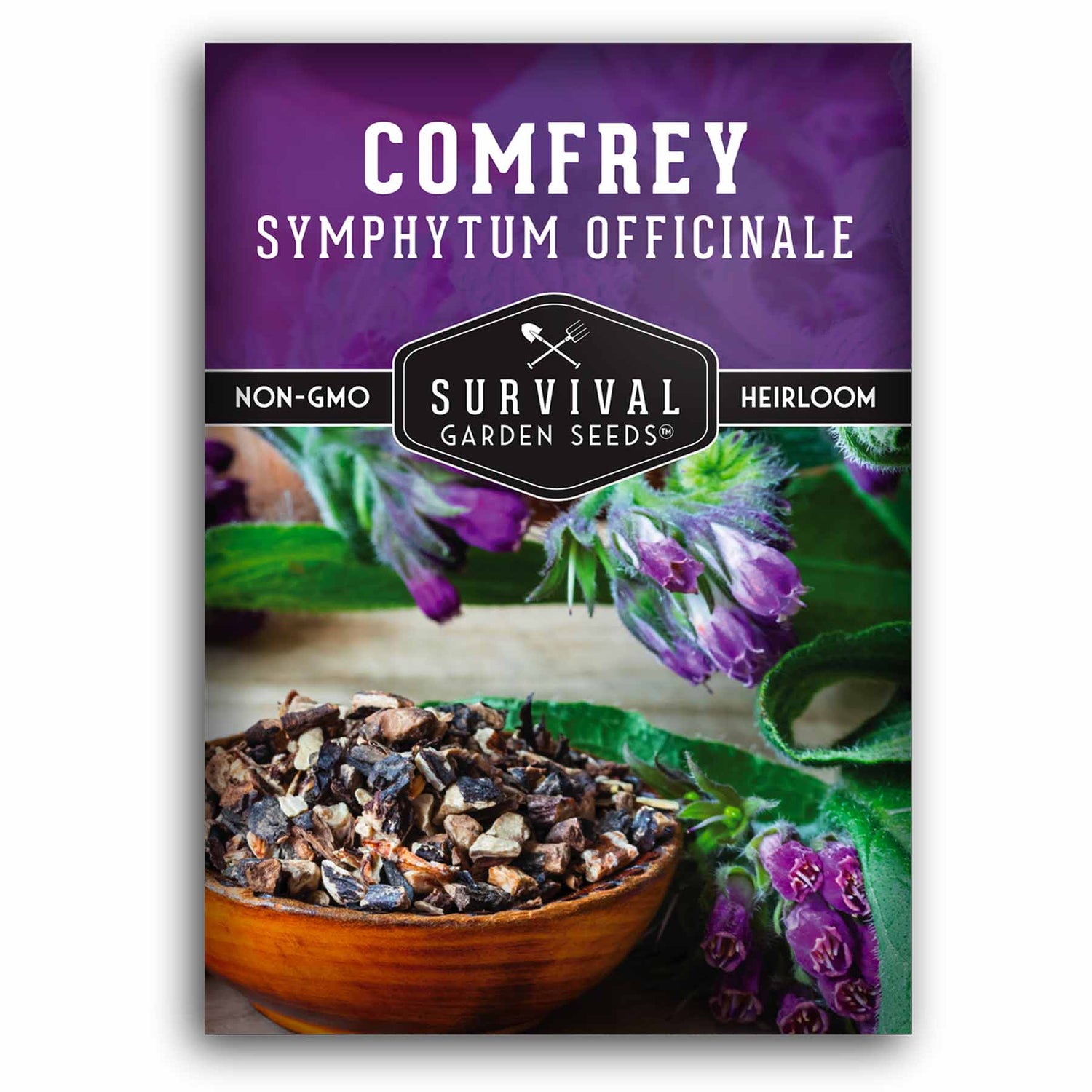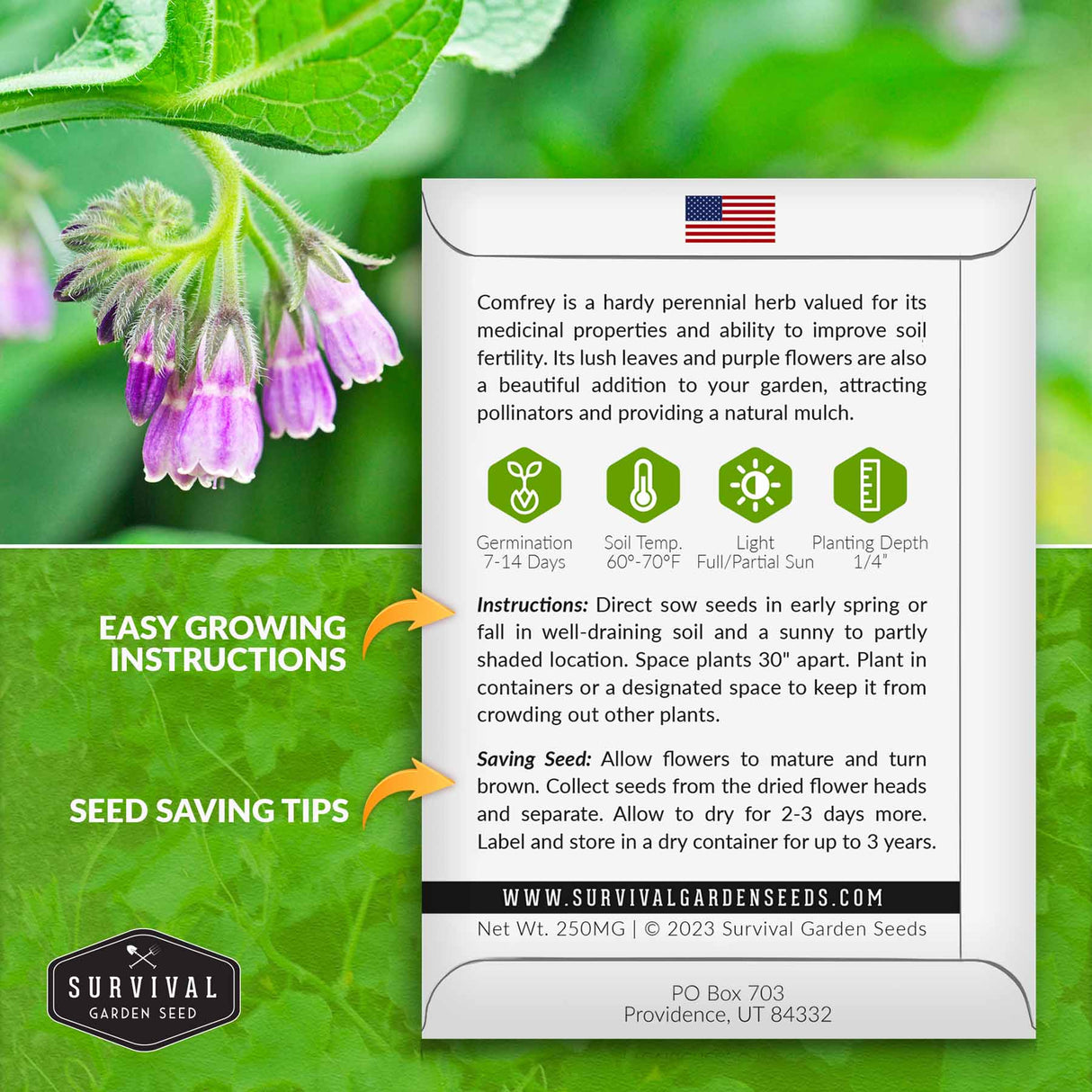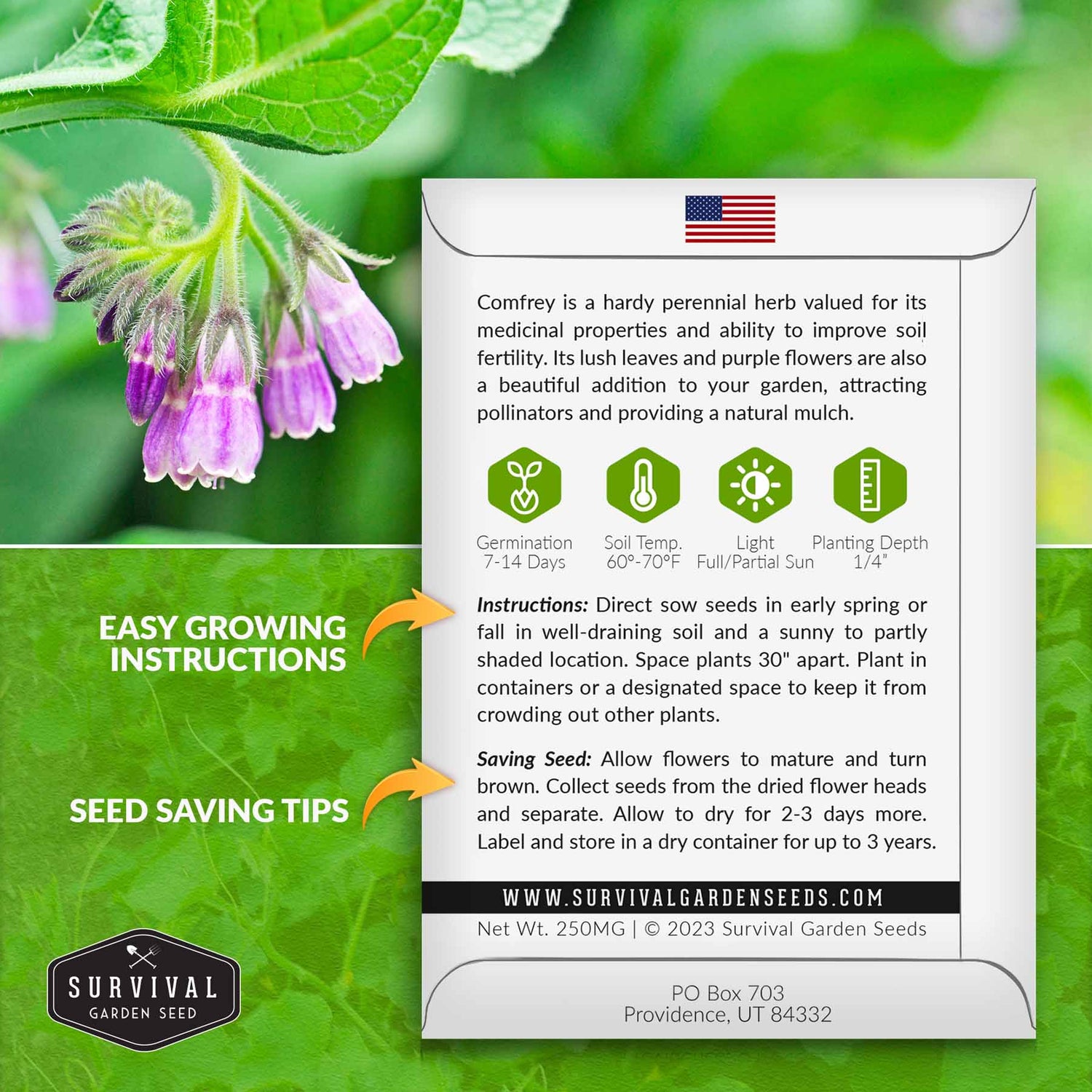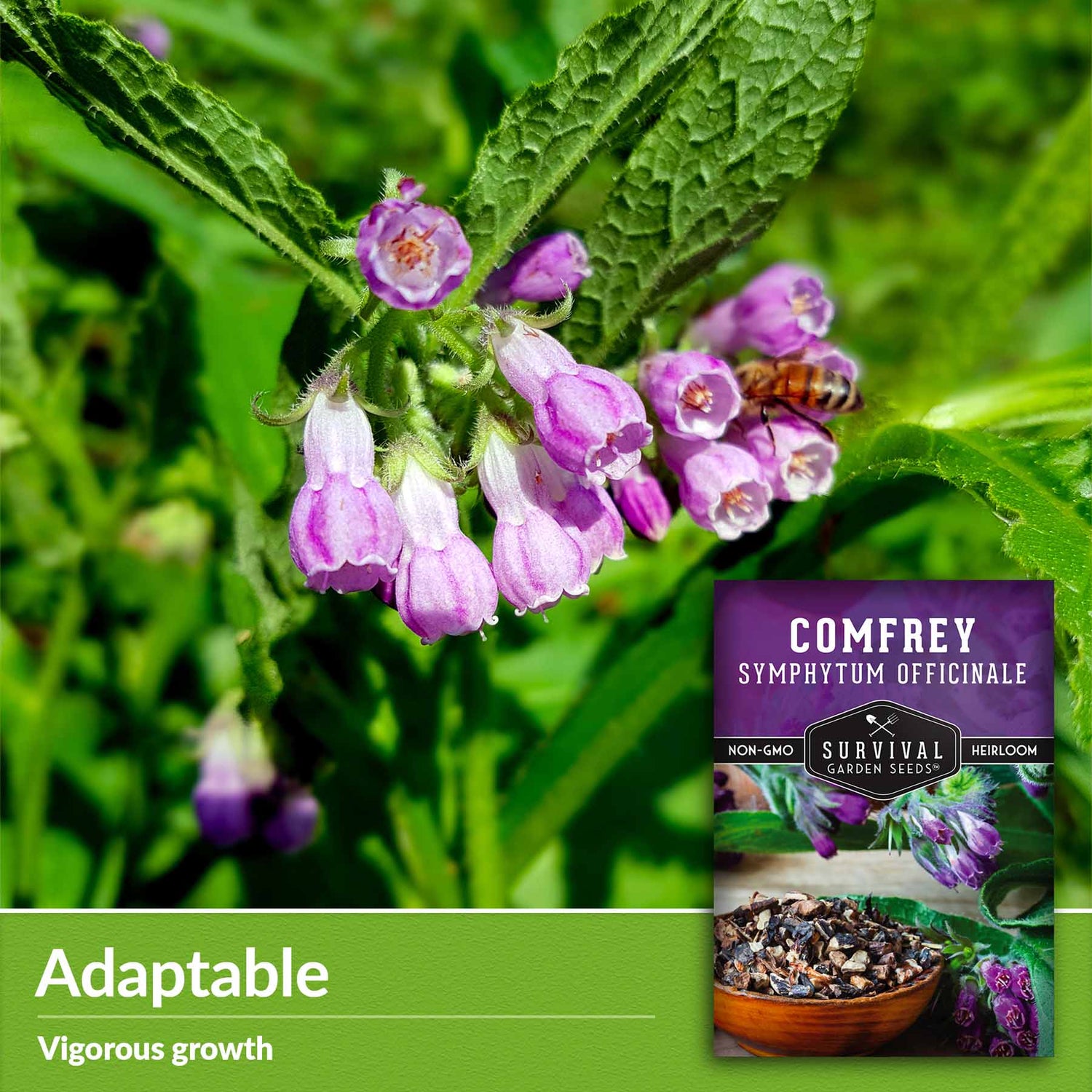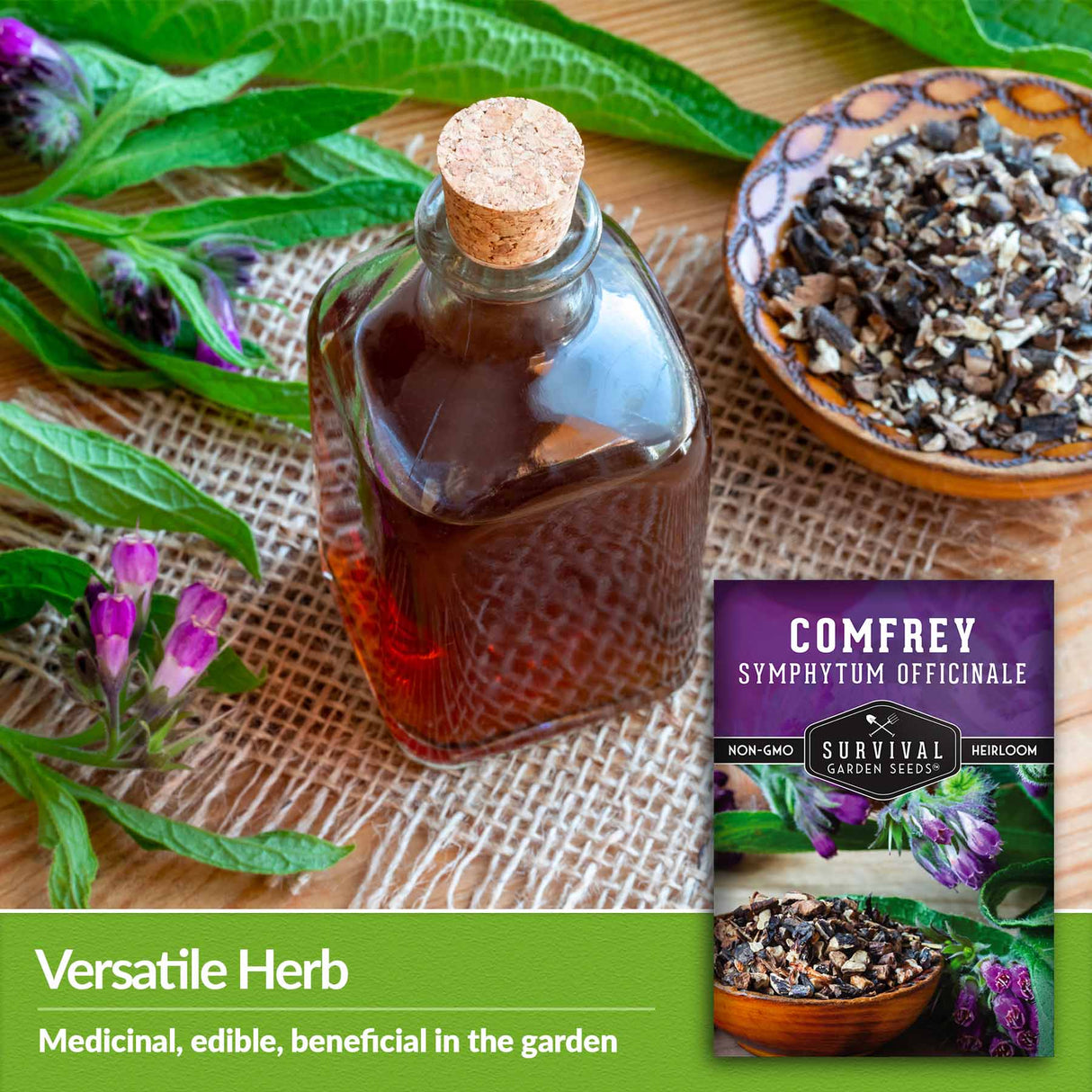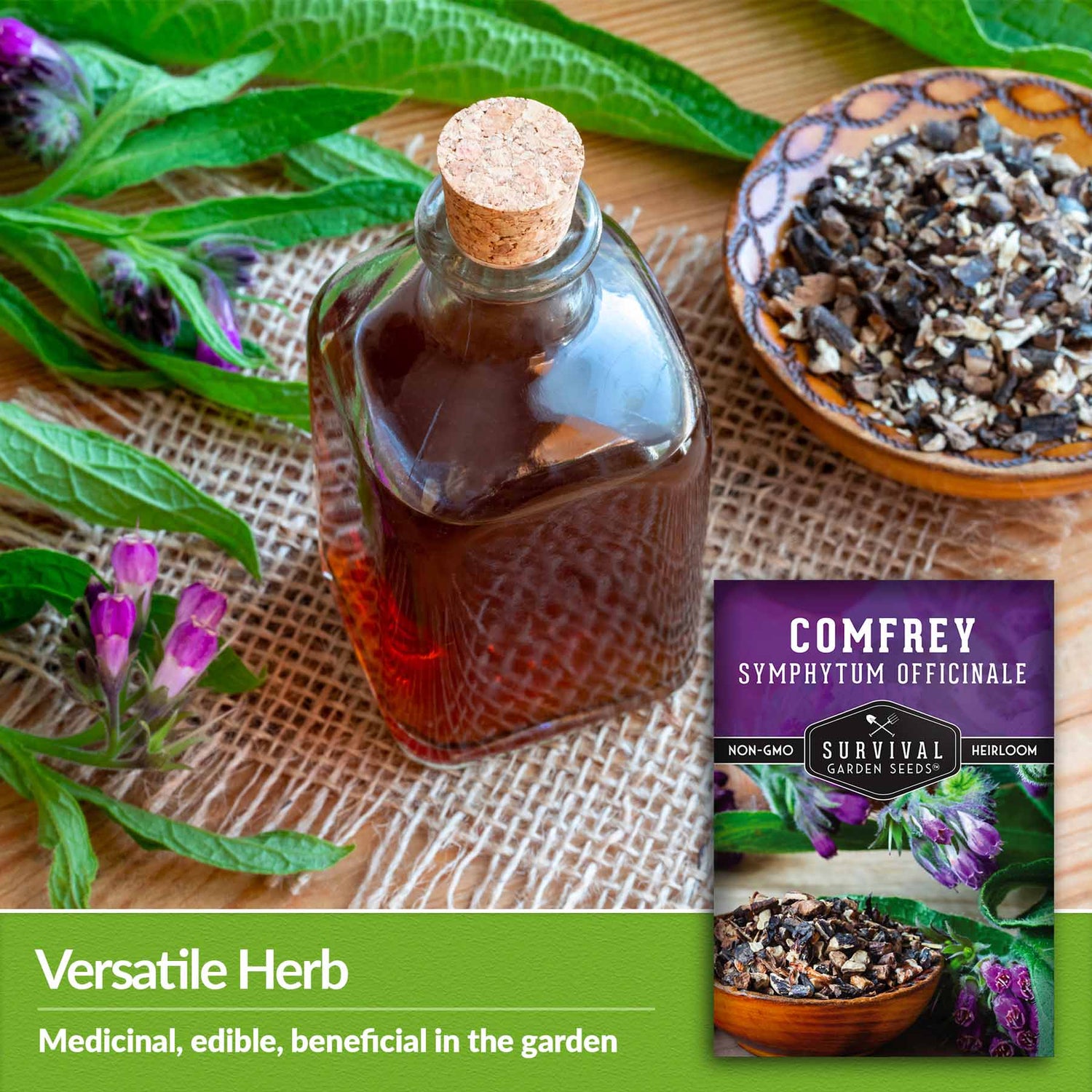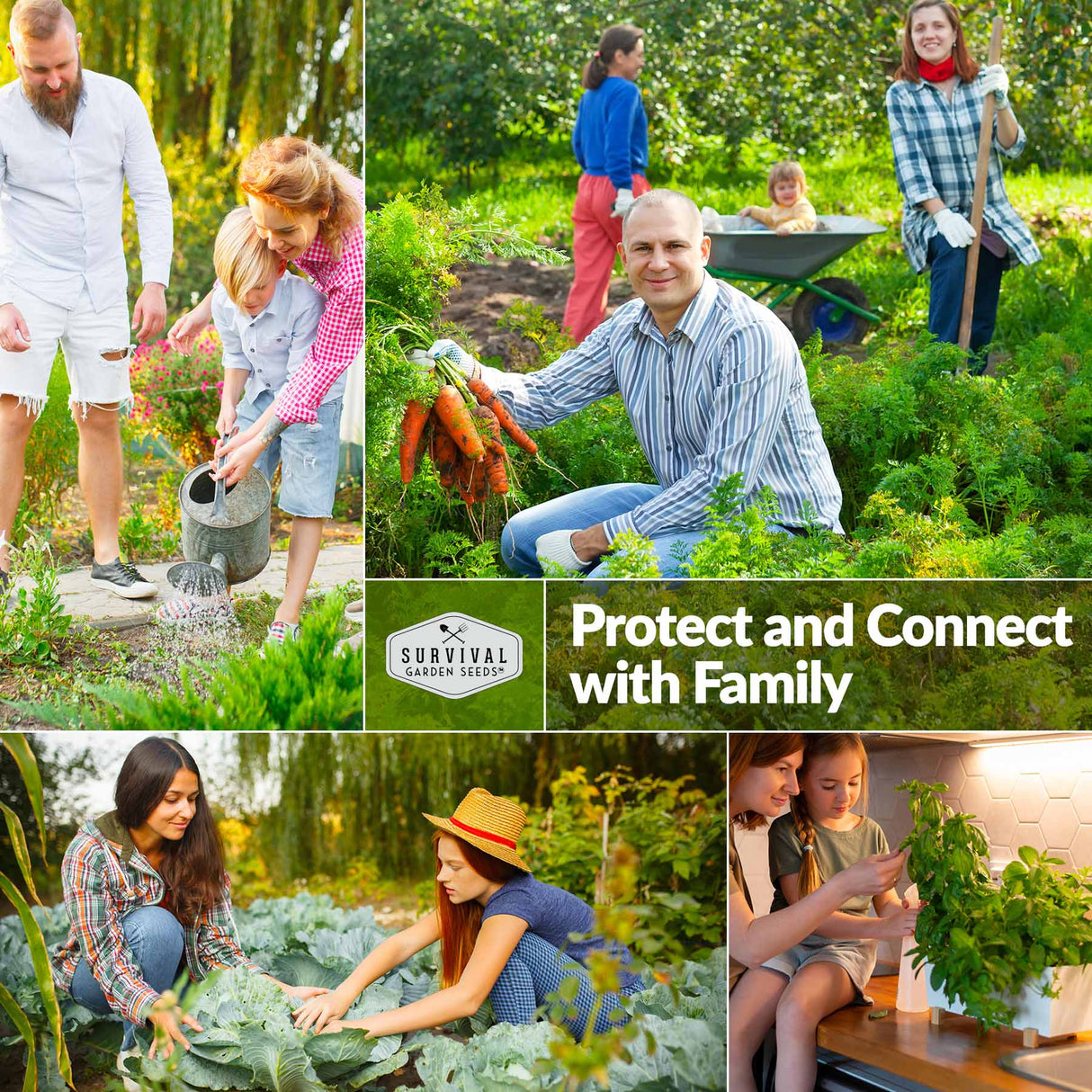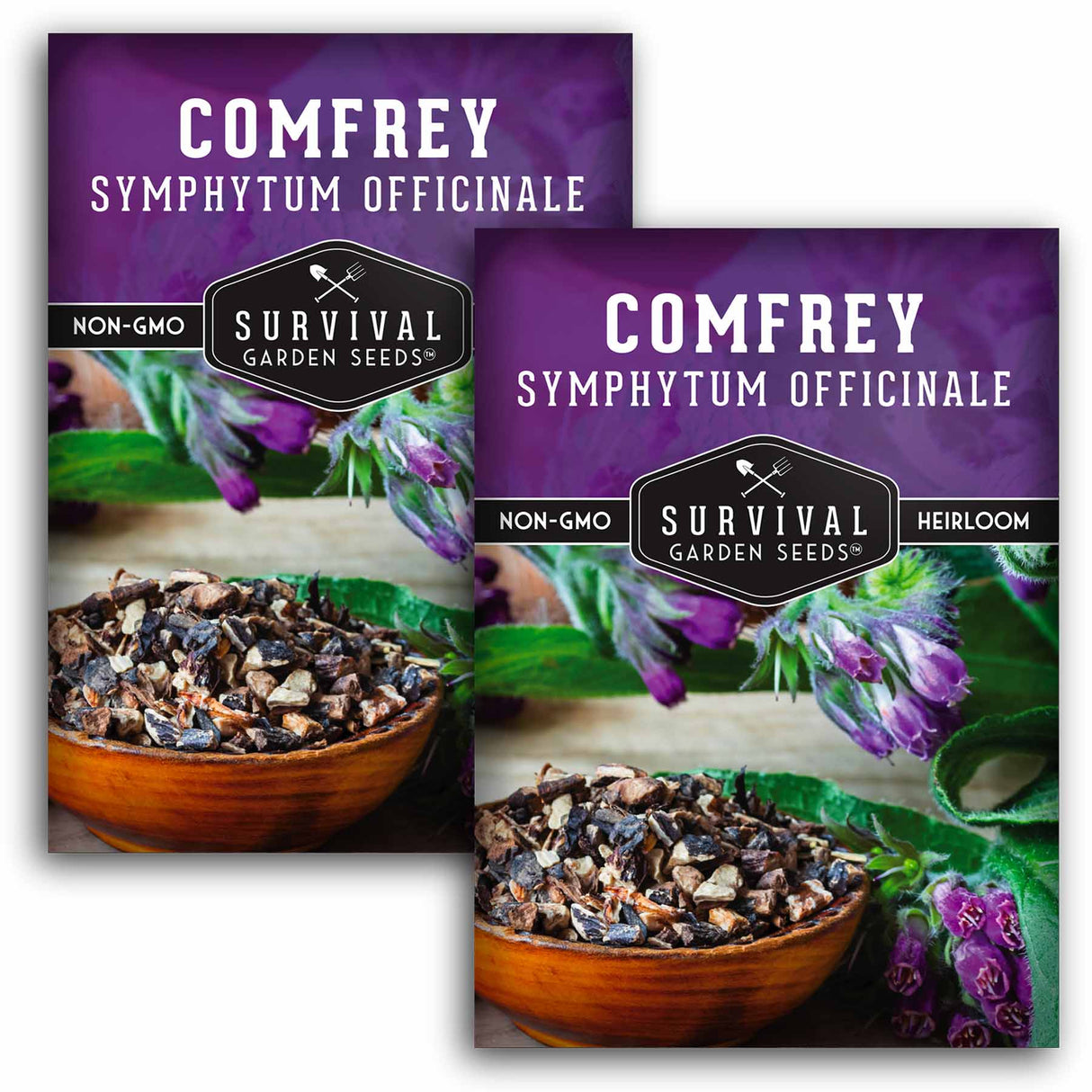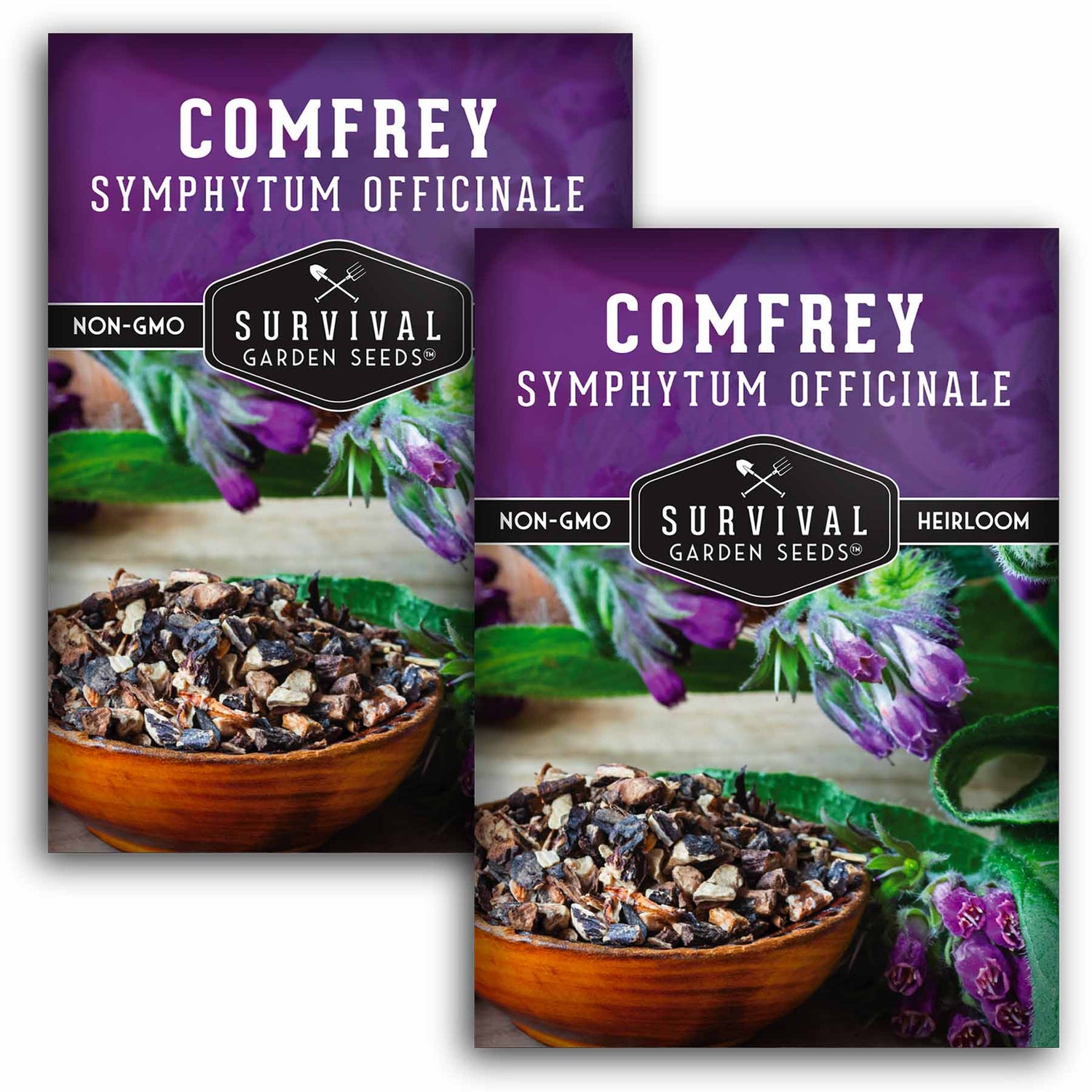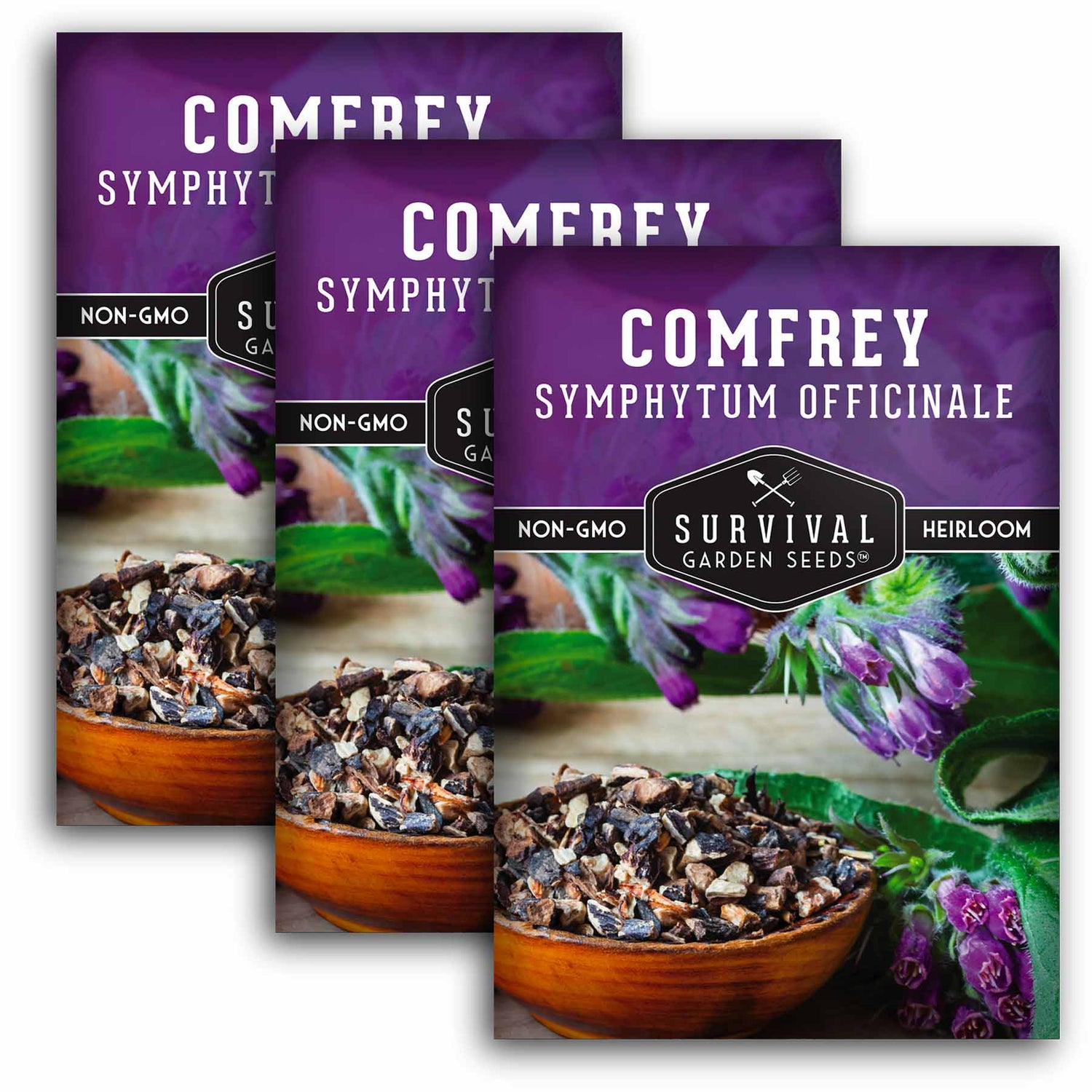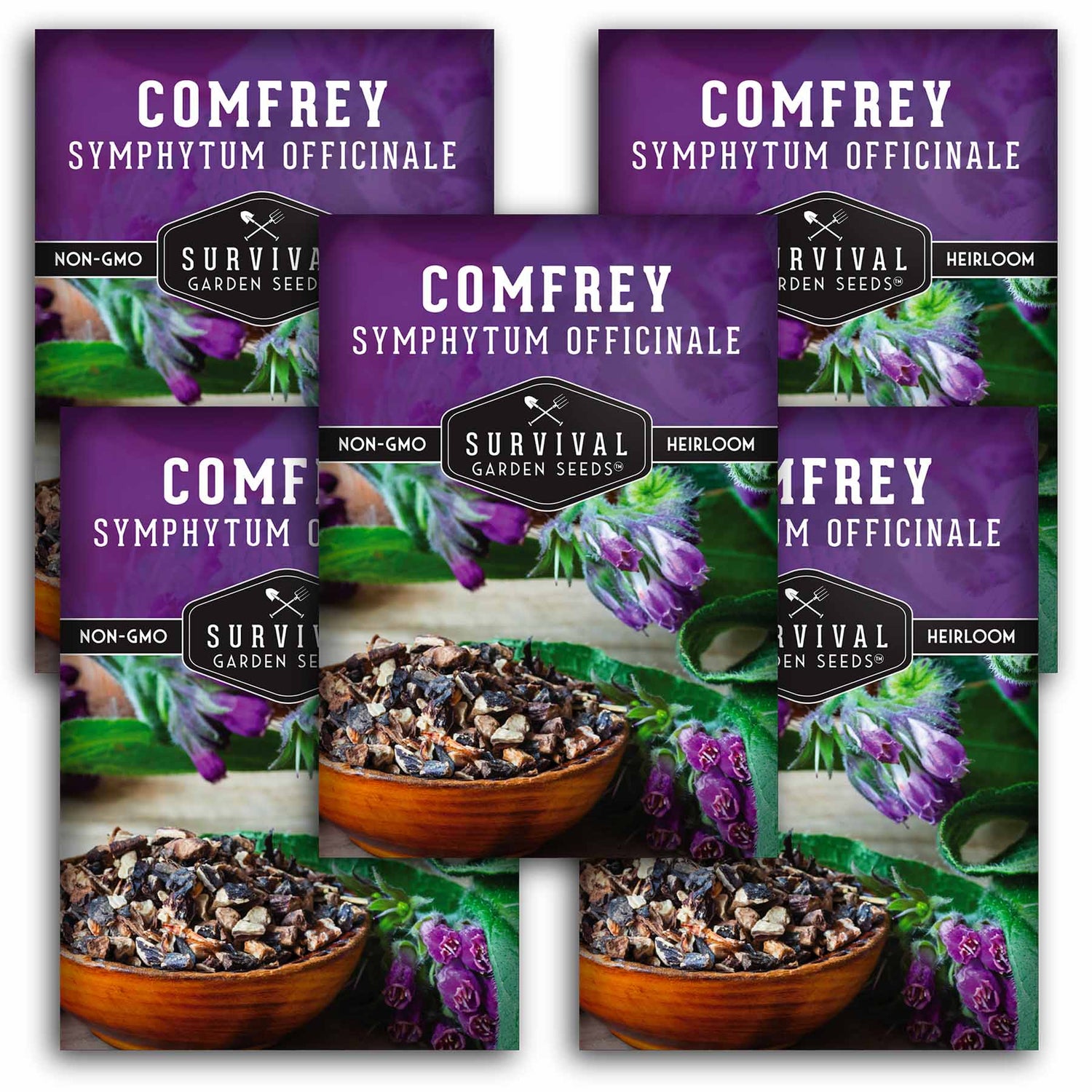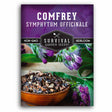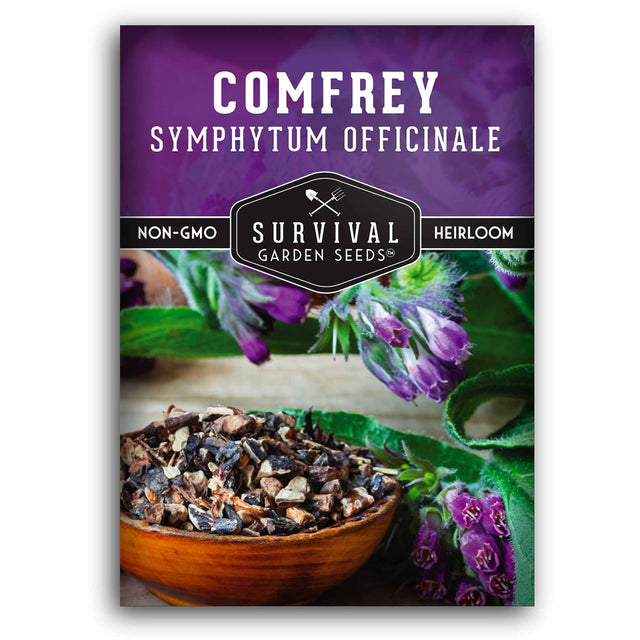Comfrey Seeds - Hardy Perennial Herb for Pollinators, Soil Enrichment & Herbal Salves
Heirloom - Non-GMO - Reliable Germination
Comfrey Seeds - Hardy Perennial Herb for Pollinators, Soil Enrichment & Herbal Salves - 1 Packet is backordered and will ship as soon as it is back in stock.
Couldn't load pickup availability
Comfrey (Symphytum officinale), also known as consuelda, knitbone, or boneseal, is a vigorous perennial herb prized for its many garden and traditional external uses. This fast-growing, deep-rooted plant thrives in a wide range of climates, producing large green leaves and bell-shaped flowers that attract bumblebees and other pollinators.
A favorite in regenerative and permaculture gardens, comfrey’s lush foliage makes an excellent compost activator or natural mulch, returning valuable nutrients to the soil. Its leaves are also used as nutrient-rich feed for chickens and other livestock, helping improve egg quality naturally.
Comfrey is valued in herbal traditions for topical preparations such as salves, poultices, and ointments that support healthy skin and recovery from minor scrapes. It is not recommended for internal use.
Resilient, Productive, and Beneficial to the Garden
- Grows well in a variety of climates and soil types
- Deep roots draw nutrients from the subsoil, enriching compost and mulch
- Bell-shaped flowers attract pollinators and support biodiversity
- Produces abundant leafy growth throughout the season
Why Gardeners Love Comfrey
- Excellent for natural composting and green manure
- Supports pollinator populations with nectar-rich blooms
- Useful in herbal salves and external remedies
- Hardy perennial that returns year after year
How to Grow
- Plant comfrey in full sun to partial shade.
- Space plants 2–3 feet apart to allow for mature growth.
- Water regularly during establishment; once mature, comfrey is drought-tolerant.
- Cut leaves several times per growing season for mulch or compost.
Harvest & Use
Harvest mature leaves before flowering for use in compost or external preparations. Dry leaves in a shaded, airy space for later use in salves or poultices. Always use comfrey externally only.
Net Wt. 250 MG
Heirloom Herb Seeds
All of our seeds are open-pollinated, non-GMO, heirloom varieties with tested germination rates
Specifications
Specifications
-
Botanical Name
-
Seasonality
-
Planting Zones
-
Light
-
Soil Temp for Germination
-
Germination Time
-
Planting Depth
-
Plant Size
-
Days to Bloom or Harvest
-
Growing Instructions
-
Seed Saving Instructions
-
Seed Count (approximate)
Payment & Security
Your payment information is processed securely. We do not store credit card details nor have access to your credit card information.
Why Choose Survival Garden Seeds
At Survival Garden Seeds, we believe in preparing today for tomorrow’s peace of mind. That’s why we offer only heirloom, non-GMO, and untreated seeds you can trust to nourish your family and support a sustainable lifestyle. As a family-owned American company, we’re committed to providing seeds that grow strong and true—helping you cultivate health, resilience, and beauty in your garden.
Frequently Asked Questions
What are heirloom seeds?
What are heirloom seeds?
Heirloom seeds are the types of seeds your grandparents grew. These varieties have been passed down from generation to generation. They’re old reliable open-pollinated varieties that aren’t typically grown commercially. Instead, they have a rich history that predates modern breeding techniques.
You can learn more about open-pollinated, heirloom, and non-GMO seeds in our Survival Garden Training blog.
How do I know my seeds are fresh?
How do I know my seeds are fresh?
Every seed packet includes a "packed for" date, and we germination test each seed lot before packaging to ensure you receive viable, high-quality seeds that are ready to grow.
Are your seeds treated?
Are your seeds treated?
No, we do not pre-treat our farmer seeds. All of our garden seeds for sale are untreated, open-pollinated, non-GMO, and heirloom varieties. They are kept in temperature-controlled cooler storage until they are packed and shipped to keep them pest and disease-free.
In what zones can I grow your seeds?
In what zones can I grow your seeds?
The seeds in our collections are specifically chosen from varieties that can be successfully grown from Zone 3 to Zone 10 USDA Hardiness Zones. However, individual varieties have specific needs to thrive in different environments. Each seed pack has optimal temperatures for germination and instructions on seed starting. Consult local frost dates to plan your garden and get the most out of your seeds.
What is the shelf life of these gardening seeds?
What is the shelf life of these gardening seeds?
Most seeds remain viable for 3 to 5 years or longer when stored properly. Check your seed packet for specific varieties. For best results, keep your seeds in a cool, dry place away from direct sunlight and moisture. Store them in an airtight container in a consistent temperature environment—a refrigerator or cool basement works well. Proper storage helps maintain germination rates and extends seed life well beyond the packed date.
Where are Survival Garden Seeds sourced?
Where are Survival Garden Seeds sourced?
The majority of our seeds are sourced in the United States, with a few exceptions when the seed is difficult to source domestically. Whenever we do have to source outside of the US, we ensure our seeds are safe to grow, non-GMO varieties that meet our standards for germination and reliability.


